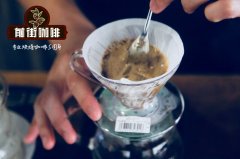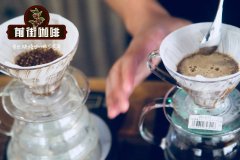Commercial hand-made coffee beans recommended _ single-product hand-made coffee beans what are there _ boutique coffee beans are good to drink by hand

Professional coffee knowledge exchange more coffee bean information please follow the coffee workshop (Wechat official account cafe_style)
The world of fine coffee is wonderful.
Coffee masters from different countries
For the production of coffee, there are also
An original understanding.
Each country has its own flavor of coffee.
So you like to make coffee by hand.
Need to know the knowledge of coffee producing areas
▲ Asia
Deep flavor and strong taste Asian coffee raw beans are generally processed by wet or semi-wet processing, the shape of raw beans is more uniform, but the color of semi-wet treated beans is darker. Asian coffee is generally characterized by thick flavor, strong sweetness and round taste, but slightly flat aroma and brightness.
▼ Indonesia's well-known representative coffee: Sumatra Mantenin (Sumatra Mandheling) Sumatra Mantenin coffee cultivation began in the 18th century, when the planting area was near the province of Aceh in the north of Lake Tawar. For a few days, most of the Sumatran coffee area is located in the south of Lindong, Subu and Takengon coffee. Because there is little difference between planting areas, Sumatran coffee does not use the producing area as the distinguishing standard, but the way of picking and handling has a great influence on the flavor of Sumatra coffee. The famous "Golden Manning" is an excellent product after the Japanese strictly control these procedures.
▼ India's well-known representative coffee: monsoon Monsooned Malabar (Monsoon Malaba) is a kind of coffee with Indian characteristics, which was made from coffee beans shipped from the coast of Malaba to Europe. Due to the sea breeze blowing on the raw beans during shipping for a long time, the appearance and taste have changed, and this taste has gradually become a taste that Europeans are accustomed to and like. This later became a special method of handling coffee beans-after the beans were harvested, they were especially placed in the moist monsoon for a few months, making them yellowish-white and less acidic, and became the monsoon Monsooned Malabar we bought.
▲ Africa
Charming fruit acid as the birthplace of coffee, African coffee plays an important role in the whole coffee industry. Although the commercial cultivation of coffee has been developed around the world for hundreds of years, the unknown wild coffee varieties in Africa are still the greatest treasure in the hearts of coffee researchers. African coffee is generally characterized by strong aroma and charming acidity, and its acidity and brightness are exhilarating.
▼ Ethiopia's well-known representative coffee: Yirgacheffe is a small town with a population of about 20, 000. The three neighboring producing areas, Wenago, Kochere and Gelena Abaya, are also classified into Yega Coffee because the flavor of the coffee is almost the same as that of Yejasuffe. Yejacheffe is similar to the neighboring Sidamo in terms of culture and geography, but it seems to be more favored to enjoy the advantageous conditions, top-quality Yega Chefe coffee with floral aromas, bright citrus acidity, lemon flavours and silky taste.
▼ Kenya well-known representative coffee: Kenya AA Kenya is located in East Africa, right on the equator, with the Indian Ocean to the east, Ethiopia to the north and Tanzania to the south. Kenyan coffee is mostly grown in the southwestern and eastern plateau areas, and the varieties are all Arabica species, and they are all washed coffee, such as Bourbon, Typica, Kents and Riuri 11. The bright fruit aroma and acidity of Kenyan coffee in shallow roasting is regarded as like fruit tea, which shows its unique flavor. Among them, the well-known Kenyan AA is full of particles and rich in taste, which is well received by the world.
▲ Central and South America
▼ Guatemala well-known representative coffee: Antigua, Vivetna fruit. The latitude of Guatemala is about 15 degrees, bordering the Pacific Ocean on the left and the Caribbean Sea on the right. The Sierra Mountains on this side of the Pacific Ocean are the main coffee-growing areas of Guatemala. Because the mountains stretch very long and the regional climate changes greatly, it has created the seven major coffee producing areas of the country. The coffee in these seven major producing areas has different flavors and characteristics. Among them, the coffee of Antigua is slightly sour, fragrant and glycolic, with a slightly volcanic carbon burning flavor, which makes Guatemala coffee especially famous in Antigua. Guaguaran coffee belongs to Arabica species, which is treated by washing. In the far northwest, there is a piece of Huehuetenango highland. Due to the elevation of more than 5000 feet, the coffee produced has the characteristics of hard texture, strong acidity and rich taste of high altitude coffee. It is also one of the most distinctive coffee in Guardia.
▼ Costa Rica well-known representative coffee: Tarrazu Costa Rica, like other Central American countries, is widely grown in Arabica. Its coffee is mainly grown in two high areas, one is the high area near the capital San Jose, and the other is the Tarrazu mountains southeast of San Jose. Because the coffee trees in Costa Rica are planted in high altitude areas, the coffee here also has a strong sour taste, and because of the lower temperature in the mountains, the coffee trees grow slowly, with a more complex and non-monotonous taste. The coffee produced in Tarasu has a special flavor of fruit and some chocolate or stone fruit, so it is also one of the favorite coffees for coffee tasters.
▼ Panama caffeine is famous all over the world. The reason is that it is closely related to Panama's unique physical and geographical conditions. Smooth taste, delicate acidity, well-balanced taste value, coupled with subtle flavors such as caramel, chocolate, citrus and jasmine.
Drinking a cup of really good coffee is a kind of happiness, so it is worth savoring and pursuing. And the definition of a good hand making coffee is definitely not just the smell, what he provides is a feeling of complete satisfaction; from the eyes, nose, mouth, throat, to the stomach, and even to the final discharge of the human body, every link must give full play to the characteristics of coffee, so that people can really re-brew their mood and soak their thoughts through coffee, and then stand out and find a new outlet and joy. With the strong aroma of coffee, all the good mood will infect everything around you. This is the lofty realm pursued by hand-brewing coffee.
END
Important Notice :
前街咖啡 FrontStreet Coffee has moved to new addredd:
FrontStreet Coffee Address: 315,Donghua East Road,GuangZhou
Tel:020 38364473
- Prev

Why does your hand make coffee so bad? The thickness and water temperature of hand coffee powder are the most important!
Professional coffee knowledge exchange more coffee bean information Please follow the coffee workshop (Wechat official account cafe_style) many people used to buy coffee beans directly from a coffee shop, only to find that they rushed out of the coffee shop taste when they were brewing. Obviously they are the same coffee beans, why is the hand-brewed coffee made by myself not good? Extraction of hand-made coffee is not just about extraction.
- Next

Introduction of hand-made coffee beans package _ how to make imported hand-made coffee powder _ what coffee beans should be used in hand-flushing pots?
Professional coffee knowledge exchange more coffee bean information please follow the coffee workshop (Wechat official account cafe_style) it is easy to make a cup of hand-brewed coffee, but it is not easy to get a good cup of hand-brewed coffee today, we will share with you how to make a good cup of hand-brewed coffee 1 utensils and materials for brewing coffee, hand-brewing pot, bean grinder,
Related
- Beginners will see the "Coffee pull flower" guide!
- What is the difference between ice blog purified milk and ordinary milk coffee?
- Why is the Philippines the largest producer of crops in Liberia?
- For coffee extraction, should the fine powder be retained?
- How does extracted espresso fill pressed powder? How much strength does it take to press the powder?
- How to make jasmine cold extract coffee? Is the jasmine + latte good?
- Will this little toy really make the coffee taste better? How does Lily Drip affect coffee extraction?
- Will the action of slapping the filter cup also affect coffee extraction?
- What's the difference between powder-to-water ratio and powder-to-liquid ratio?
- What is the Ethiopian local species? What does it have to do with Heirloom native species?

